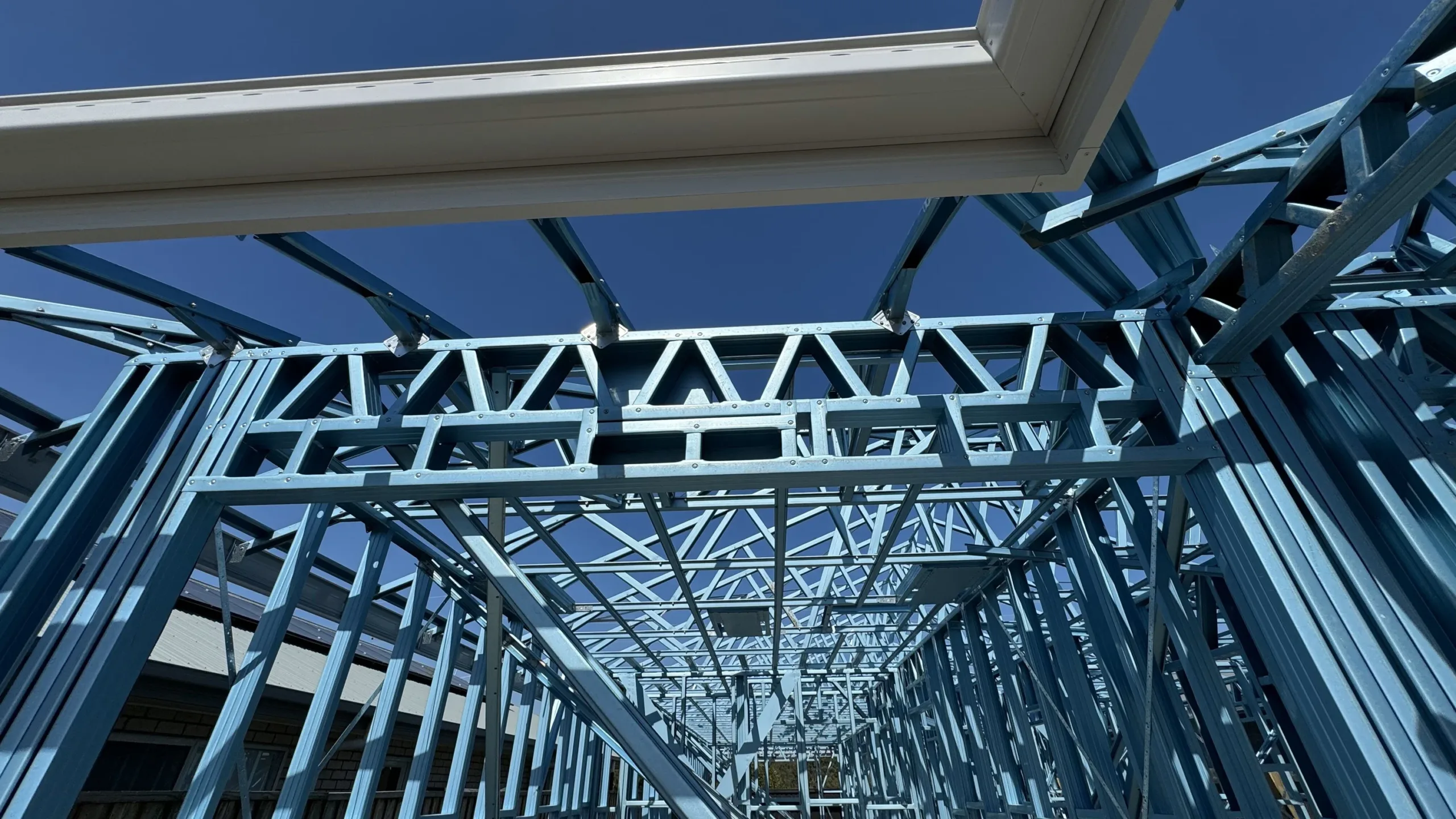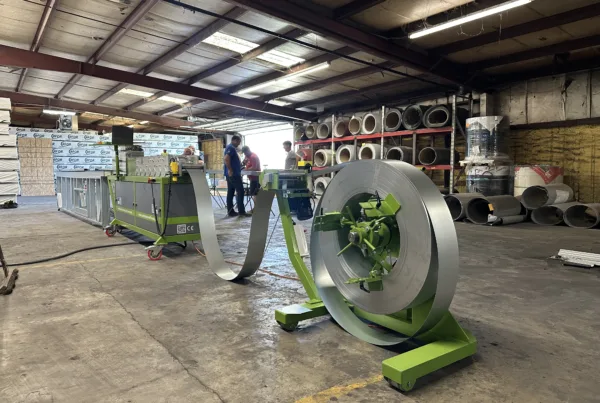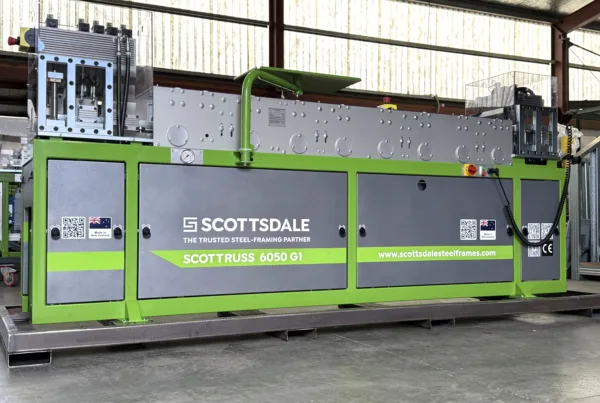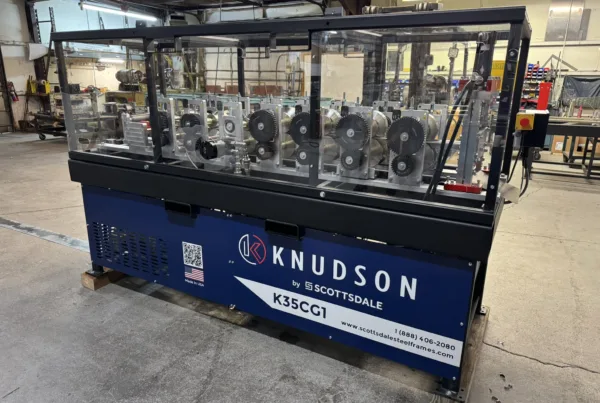Overview
Connections are an important component within a cold-formed structural system. The importance given to check the structural design adequacy of the member in the design process must be extended to the connections as well. The connectors such as rivets and screws used in forming the connections plays a key role in the load transfer path within the structural design process. The connections transfer the load between the structural elements and eventually transmit the induced forces to the foundation for a safe and robust structure. Proper connections are needed for effective load path along with connectors and are discussed in this article. A typical load flow path is shown in the below image.
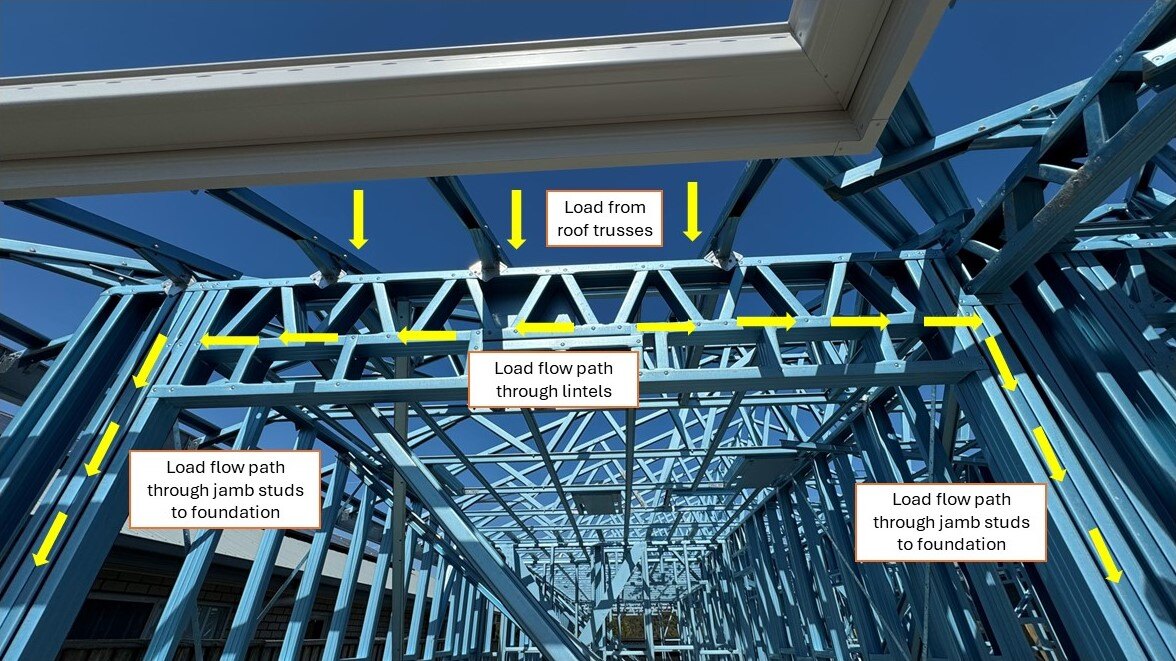
Connection types used
Screws, rivets and bolts are the predominant mode of connections used within the cold-formed steel industry. While bolts are used as the main connector in trusses for connections, screws and rivets play a major role in connection of both trusses and panels within the cold-formed steel buildings. Therefore, this article will focus primarily on the comparison of screws and rivets in the connection of cold-formed steel members. Images of typical steel framing with screw and rivets are shown below.
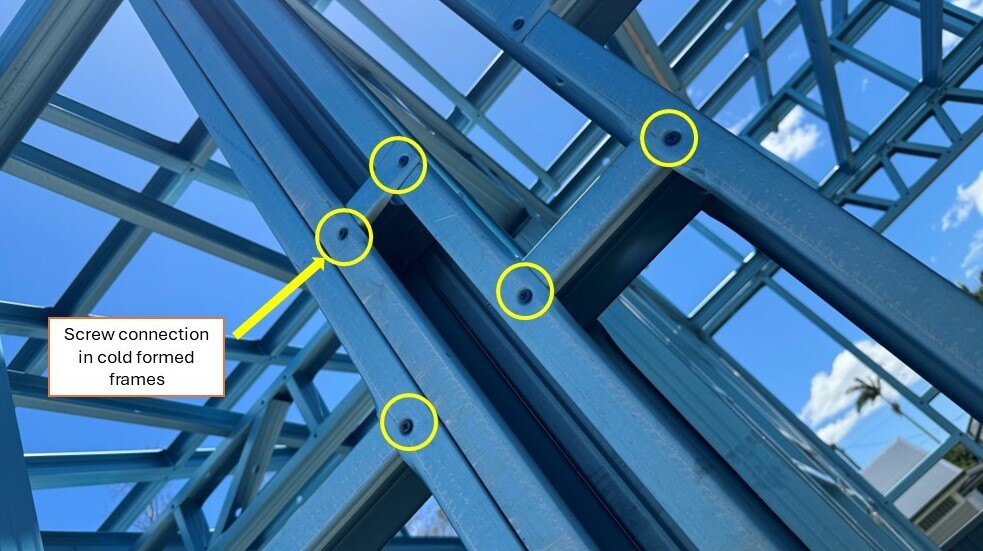 |
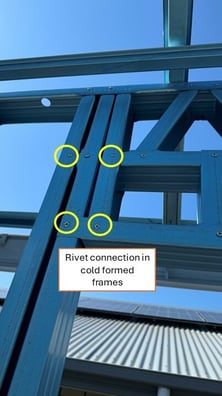 |
| (a) Screw connection | (b) Rivet connection |
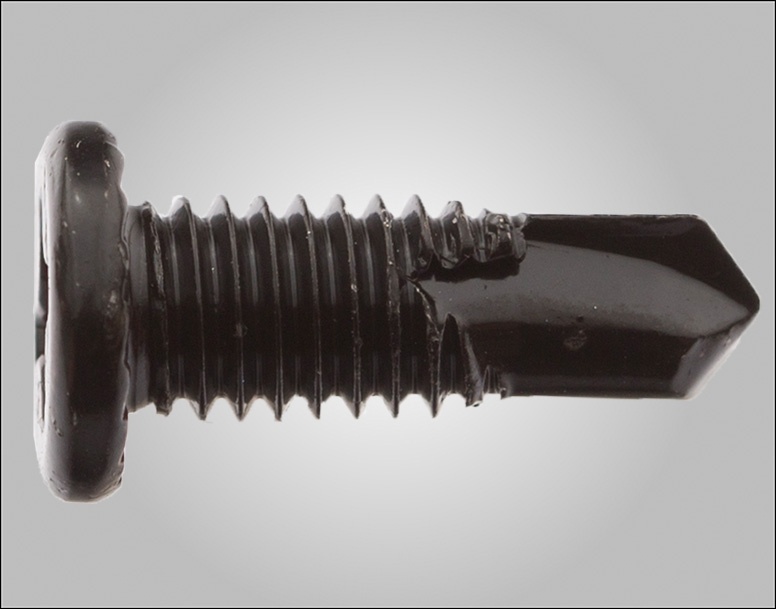 |
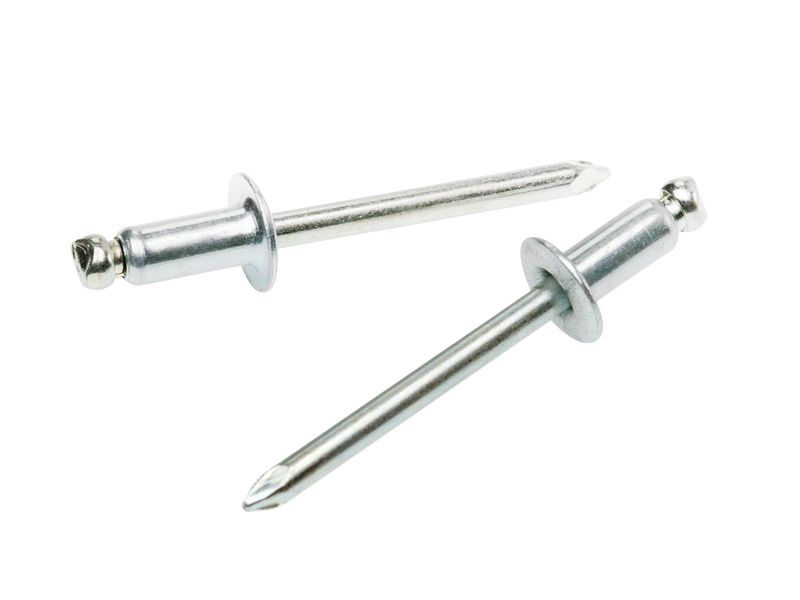 |
| (c) Typical framing screw | (d) Typical rivets |
Refer to the attached links for details and capacities on the scerws and rivets
Click here for – Link to Screw details and capacities
Click here for – Link to Rivet details and capacities
NASH handbook Chapter 6 also provides more details about various connection types used within the cold-formed steel industry and can be found within the attached link – Click here for more details.
Strength comparison
Strength comparison between screws and rivets are discussed often within the cold-formed steel industry. The framing screws inherently has more capacity against shear and tension. However, other failure modes such as material failure of the connection constitutes for the entire connection failure within cold-formed steel frame construction. From past research and extensive internal experimental investigation and theoretical calculations, the dominant mode of failure was the tearing of cold-formed steel material up to for thicknesses 0.55- and 0.75 mm steel irrespective of the connector used as shown in image below.
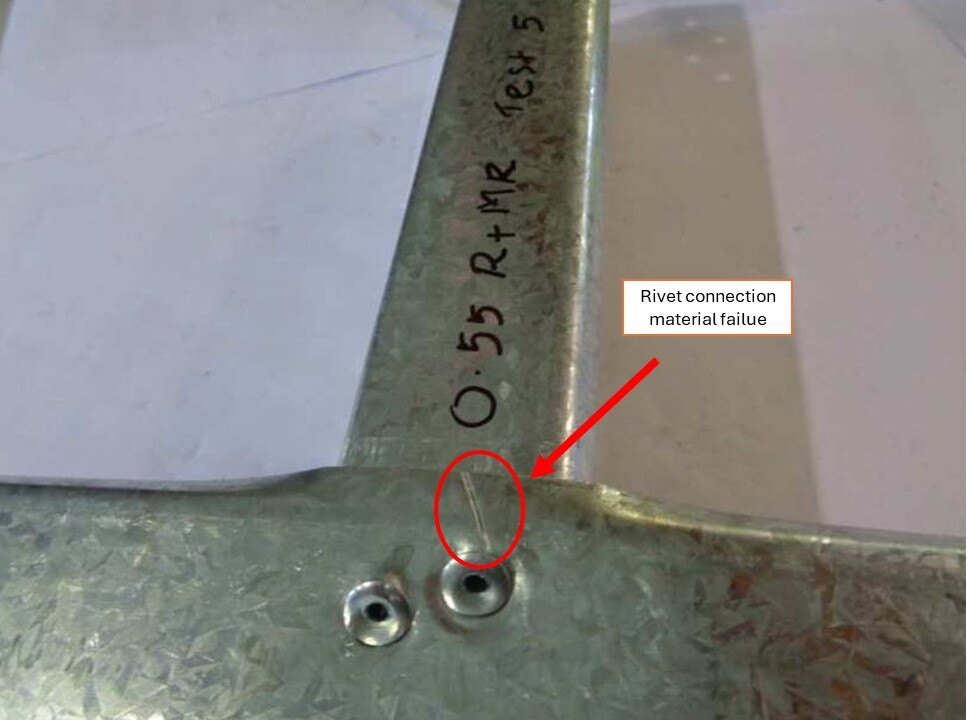
Therefore, using either screws or rivets would cause the material to fail in trusses or panels or any cold-formed steel structural elements irrespective of the connector. But for material thickness greater than 0.95 mm the failure was due to the rivets. Screwed connections were found to perform better in these scenarios and result in higher capacities.
It is worthwhile to note that blind pop steel rivets were used in this comparison. Using structural steel rivets could result in capacities equal to that of framing screws.
More details about the rivet vs tek screw comparison can also be found in one of our articles from the archive – Click here for details
Cost comparison
There is no obvious choice when it comes to the cost in comparison between rivets and screws as the weight and cost difference are quite insignificant if either the rivets or screws are procured in bulk. All fastening holes for the panels within the Scottsdale system are 5 mm and are pre punched at the necessary locations with the help of the intelligent ScotSteel and ScotRF software. A dimple is also made at the connection location to secure the fastener in place to avoid any slippage. However, the real cost comes along with the speed at which multiple connections can be made within the cold-formed steel trusses or panels using either screws or rivets. The speed of execution depends upon the experience of the fabrication crew and becomes subjective to arrive at a conclusive result to signify one is better than the other.
Practical considerations
There are several practicality factors that must be considered in choosing the appropriate connection for the cold-formed steel trusses or panels. This list includes but not limited to the following
- Ease of connection between two metals
- Effort needed to fasten the connectors
- Equipment needed to perform the connection
- Damage to base material during the connection process
There are some practicality issues when it comes to fastening with screws. As an example, when fastening wall panels, once the members are produced out of Scottsdale roll forming machine, the frame needs to be fastened on both flanges at the stud to track and stud to nogging locations. By using rivets as the connector, the frame can be fastened both from top and from the bottom without flipping the frame as shown in image below.
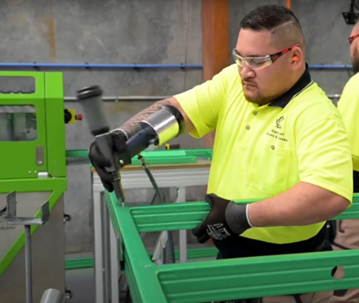 |
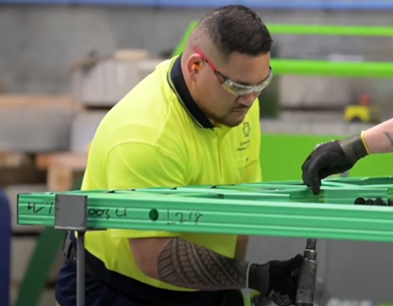 |
| (a) Riveting from top | (b) Riveting from bottom |
However, while using screws, the assembly team must flip the frame to connect the other side of the frame causing significant slowdown in the assembly process. Hence why Scottsdale strongly recommends the rivet connection over screws to our customers.
Another practical disadvantage of using the screws over rivets is that the screws can slip while fastening and can cause the pre punched holes in the frames to expand by drilling an additional hole in the metal stud framing. This can cause significant reduction in the strength of the connection due to slotting of the hole due to over fastening or misplacement of the screw angle while fastening. These issues simply don’t exist while riveting as a pneumatic rivet gun pulls the steel mandrel of the rivet with ease and also collects them. There is also significantly less physical strain to the installer as they don’t have to push through the hole as in case of screws.
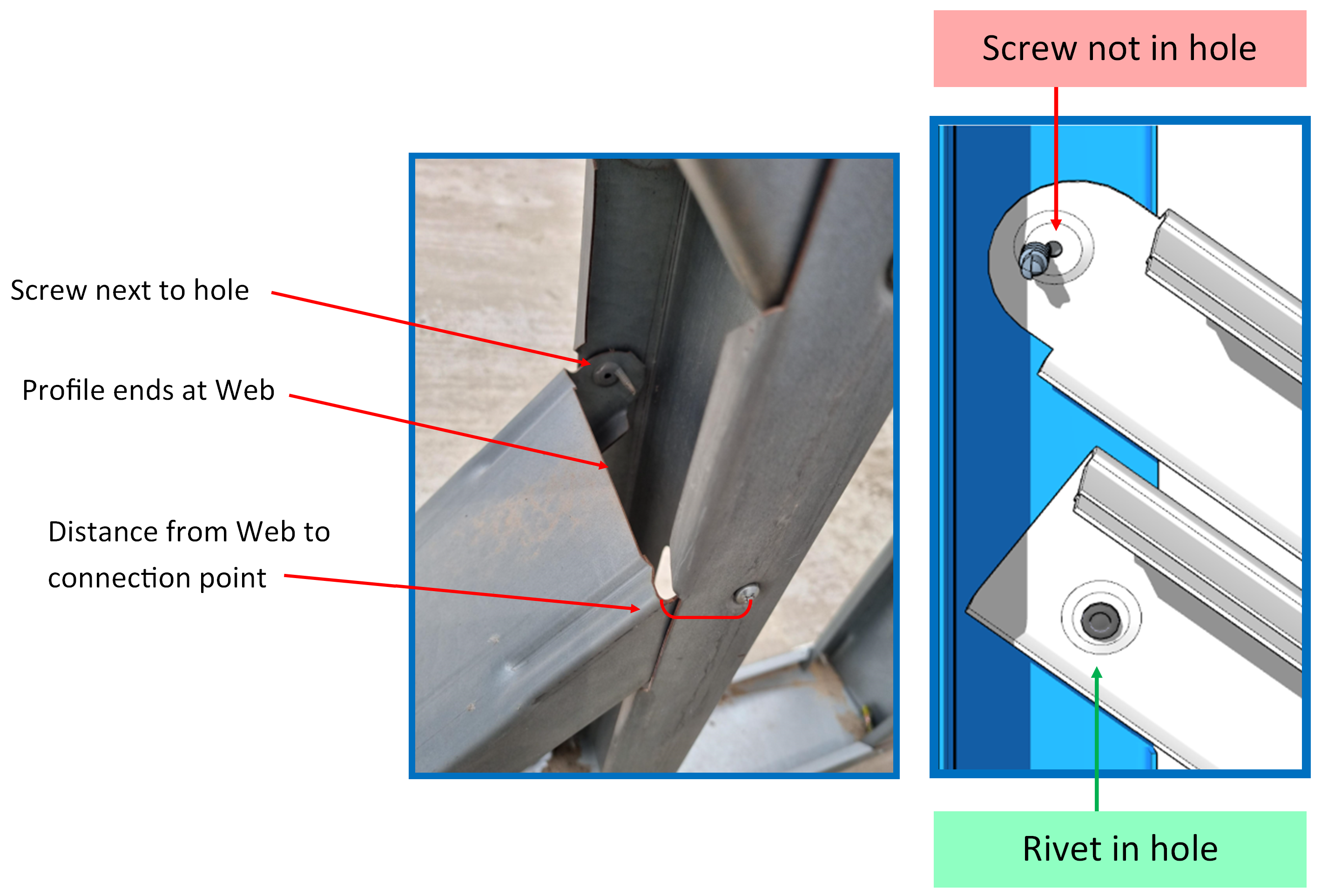
Note: Aluminium rivets must never be used for structural applications as this will compromise the structural integrity of the connections and the system.
Scottsdale’s choice
Based on the above-mentioned arguments and extensive research on connections Scottsdale recommends the use of rivets in all the connections using the C section profile. Also, all connections using the rivets are experimentally tested and verified as per various international standards and are readily available within the ScotSteel Engineering software for use by customers.
Feel free to reach out to us for more information on how our metal stud framing technology can help in your construction business.
